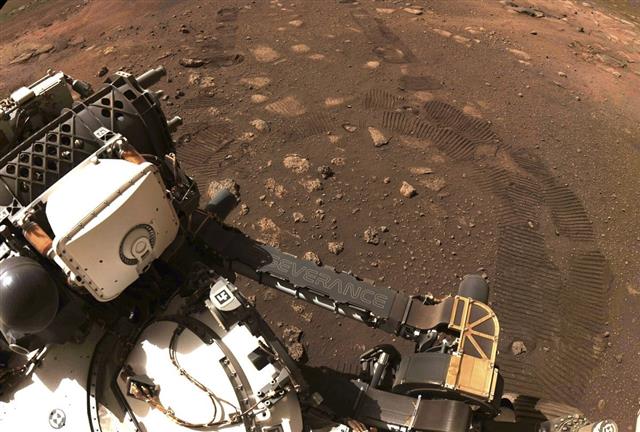
the Rover Perseverance US space agency (NASA) specified Different types of organic molecules to Jezero Crater to Mars. According to the researchers, it cannot be ruled out that the discovered materials are of “biogenic” origin or are the result of life on the planet.
However, the Organic molecules could have formed in other ways as well, such as the interactions between water and dust, or even the fall on the planet by dust or meteorites. What the results indicate is that the Red Planet may have been more active in the past than we thought. According to The Independent, these findings could have major implications for the search for extraterrestrial life.
the Understanding more about Martian organic matterAccording to the study, it could shed light on the availability of carbon sources, with implications for the search for potential signs of life. The SHERLOC (Scanning Habitable Environments with Raman and Luminescence for Organics and Chemicals) instrument on the rover is the first instrument to enable detailed mapping and analysis of organic molecules and minerals on Mars. the The rover touched down inside Jezero Crater in February 2021. Billions of years ago, the crater contained a huge lake.
Since then, and Scientists are exploring the geological makeup of the crater floor with a series of rover instrumentsWhich has the ability to take pictures and analyze rocks. Observations from two formations on the floor of Jezero Crater were analyzed by Sunanda Sharma, Ryan Roppel, and colleagues.
And On the ten targets Sherlock noticed on the floor of Jezero Crater, organic molecule signals were detected. Most of them are concentrated in the formation of Muadh, and the least of them are in the formation of Al-Siytah. The data showed diverse mineral binding and a spatial distribution that may be unique to each composition. As the scientists stated, even if the material is not really of biological origin, It could give us important clues about whether Mars could host extraterrestrial life.
Using our knowledge of life on Earth to search for possible evidence of past life on Mars.
“Not all organic matter is of biological origin,” noted Ashley E. Murphy, a researcher at the Planetary Science Institute and co-author of the new study published in the journal Nature. Monitoring spatial relationships between minerals and organic matter is essential when evaluating organic origin and potential biological signatures. All What we know about life on Earth is limited to what has been preserved in the mineral rock record. Biosignatures are found in some minerals and some minerals hold organic matter better than others».
“Mars It may have had a similar early geological history to EarthSo we’re using our knowledge of life as we know it on Earth about where to look for possible signs of past life on Mars. “Mapping organics allows for a better understanding of whether the carbon cycle on Mars is similar or different from Earth’s, as well as the capacity of Mars to host life,” he added.

“Avid problem solver. Extreme social media junkie. Beer buff. Coffee guru. Internet geek. Travel ninja.”





More Stories
In Greece Porsche 911 50th Anniversary – How much does it cost?
PS Plus: With a free Harry Potter game, the new season begins on the service
Sony set to unveil PS5 Pro before holiday season – Playstation